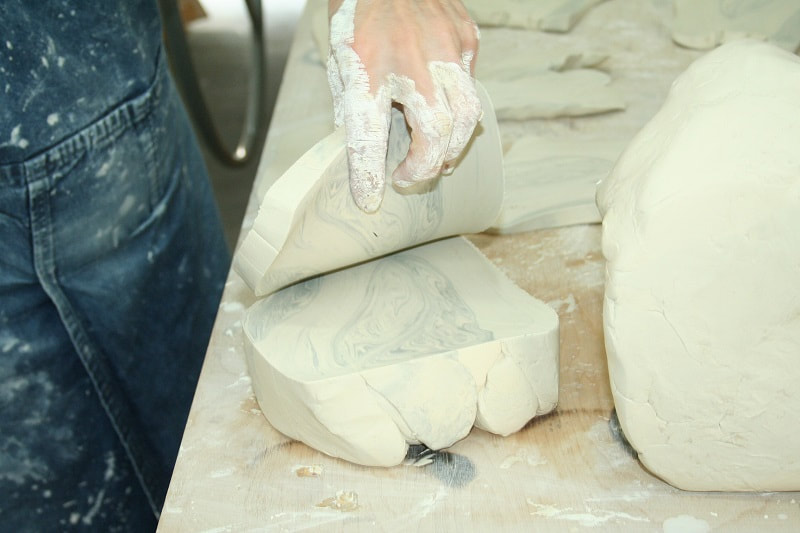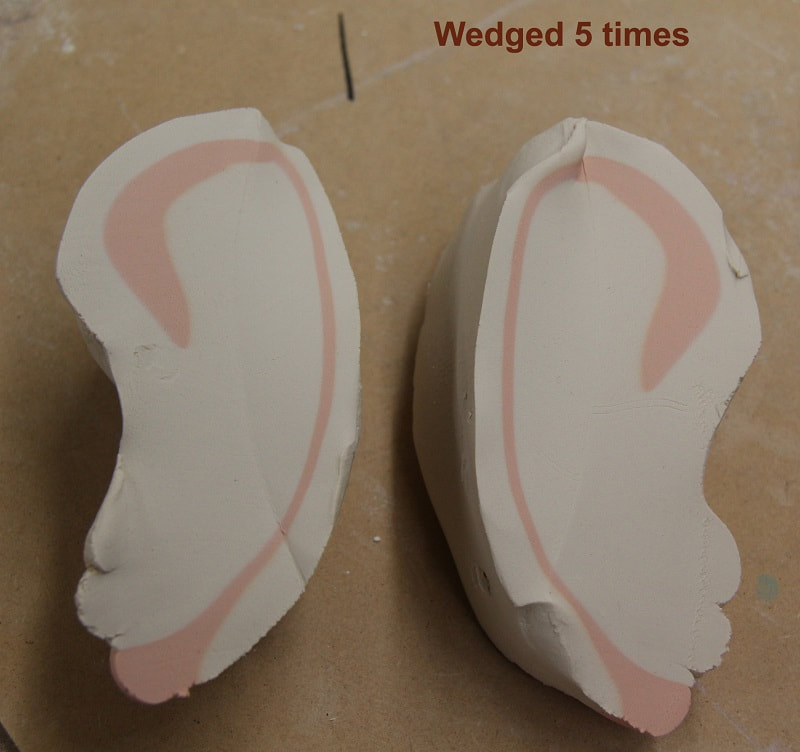|
David Voorhees is a professional potter from North Carolina who works with porcelain. He presents an online workshop (Porcelain tips for wheel pottery) at TeachinArt online school of art and demonstrates in the e-course how to do spiral wedging. This video clip is a short preview of the six weeks online class with David.
What is wedging? It is a clay term for kneading and is used to remove air bubbles or air pockets from the clay. Any air trapped in the clay, makes the centering of the clay on a potters wheel so much more difficult and if an air pocket is trapped inside clay and you fire it in the kiln, it can explode. Wedging helps to spread moisture evenly throughout the clay which helps with easier centering on the wheel. Even if you do not use a potter's wheel and only work with hand building, then wedging is just as important. Many potters have experienced the shock when they opened the electric kiln and see that one of their pots (with air trapped air inside) exploded and messed up all the surrounding pots. The spiral wedging technique is handy when you have to wedge or knead large clay batches. It is also called the Japanese wedging or kneading. Some potters only use the spiral method. We will post later other wedging techniques.
Links
Online art workshops (e-courses) Demonstrations, tips & techniques Art instructors Preview e-courses
Tags:
#wedgingclay #spiralwedging #teachinart #teachingartist #ceramicschool #potteryschool #kneadingclay
0 Comments
Antoinette Badenhorst explains how to do the bulls head wedging technique in her online workshop Understanding Porcelain. This is a video clip from her six weeks online class. It all starts with preparing the clay before your start with any wheel throwing or handbuilding projects.
Wedging clay is a hot topic to discuss among potters. Some believe that spiral wedging is the best way for preparing the clay, while others will not even think about moving away from the bull's head or ram's head wedging technique. Some ceramic artists even differ about the spelling of the wedging technique - is it bullshead, or maybe bull's head or even just bulls head - and the same argument is used for the ramshead method. Then we also have other techniques like slam wedging and there may be more, but we will discuss that later.
Some ceramic scholars learn that a chunk or block of clay is cut into two pieces with the shape of a wedge. The top one is lifted from the lower one, turned over and slammed onto the wedge that remained on the wedging table. This process is repeated until there are no more air pockets in the clay. The wedging process helps to get the clay uniform in plasticity, texture and color. Roughly 20 wedging's or kneading is enough to prepare the clay.
Other links:
How to do spiral wedging (David Voorhees) How to center clay on the pottery wheel (Antoinette Badenhorst) Demonstrations, tips & techniques E-course (online workshops)
Tags:
#claywedging #wedgingclay #wedgeclay #potterytips #teachinart |
AuthorTeachinArt is an online art school with professional artists as instructors who educate, enridge and promote art. Categories
All
|


 RSS Feed
RSS Feed